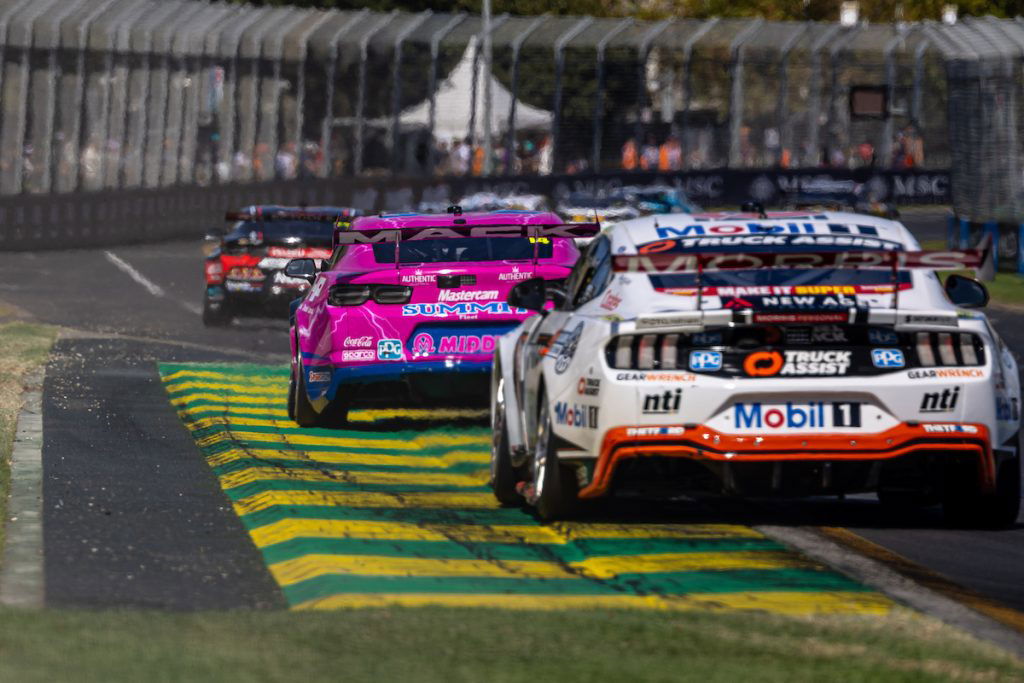

While the modern era of the Australian Touring Car Championship (the inception of the five-litre V8 ruleset in 1993 to the Gen3 days) has featured as many as five different marques (not counting the Super Tourers which filtered early in the era), a duopoly of Ford and General Motors has been the norm rather than the exception.
The involvement and support from the Ford factory has varied over the years, while Chevrolet replaced Holden for the start of the Gen3 era, but Mustang versus Camaro is an evolution of what the V8 Supercars Championship (a brand which took effect in 1997) has been for most of its history.
The introduction of a new make does imply some level of commercial support/benefit at least, because it would seem unlikely that a team would go to the effort of homologating a new model for emotional appeal or the sake of it.
Kelly Racing was sponsored by Nissan in its Altima days and likewise Garry Rogers Motorsport by Volvo when it fielded S60s, but Erebus Motorsport’s Mercedes-AMG E63s were an expensive customer exercise and it transformed – quite successfully – into a privateer Holden team after just three years.
In any case, the days of big factory money giving teams the opportunity to sell the same space on a car twice are gone.
That does not necessarily mean we should not welcome manufacturer involvement at all, noting that Supercars benefits from Ford leveraging the category as a marketing vehicle, even if its spend would surely be more modest than it was in the halcyon days of the 2000s.
But, rationally, there will be no new manufacturer unless someone makes a business case stack up.
As for the sporting element, does Supercars need it?
One of the virtues of GT3, for example, is the variety of machinery; not just different body shells, but a very broad range of powertrains, with contrasting approaches to engine architecture, placement, displacement, and choice of naturally aspirated versus turbocharged.
Balance of Performance is supposed to even all of those different cars out across a lap, but cars can achieve their speed quite differently.
Supercars, on the other hand, is a technical parity category.
All the teams signed up on that basis and the fanbase – the largest for any motorsport category in its home markets – implicitly endorses it.
It is a philosophically similar yet different approach to BoP but, if applied perfectly, then a Mustang should behave exactly the same as a Camaro if placed in the hands of the same team and driver.
A third or fourth manufacturer would mean another model or two which drive the same as a Mustang or Camaro, only the bodywork is different.
NASCAR presently features three manufacturers – Toyota being represented in the Cup Series by a V8-powered, rear-wheel drive Camry – although its parity regime is somewhat less prescriptive than Supercars’ present-day rules.
Despite Gen2 theoretically opening up Supercars to non-V8 engines, the closest the category came to an alternative was testing of the twin-turbo V6 which was to have eventually powered the ZB Commodore.
Present regulations (Rule A1.2.3.3 of the Operations Manual), however, stipulate V8 only.
Supercars would be more attractive to other manufacturers if it were to relax that rule – that much is logical – but would you, the fan, want that?
BMW’s global motorsport boss, Andreas Roos, indicated in February that the Bavarian marque is unlikely to join the category because of lack of road relevance and technology transfer (noting its V8-powered Hypercar is also hybridised, while the M4 GT3 features a turbo-charged I6).
That was, however, before the Gen3 regulations had taken any firm shape, and even months before the decision to retire Holden, while we now await a decision on what will replace the Camaro, in both NASCAR and Supercars.
So, we will put the same question to you this time, but with an option to make the powertrain relevant.
Does Supercars need more manufacturers? Cast your vote below in this week’s Pirtek Poll.



















Discussion about this post